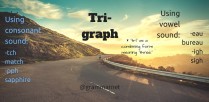“Historical present tense” can be a handy tool in narration; here are a few tips and taboos to keep in mind when using it.
Embed this image to your site:
To download high resolution poster click here.
A Quick Refresher on Present and Past Tense
Simple Present: “I eat a cheeseburger every day.”
Present Progressive: “I am eating a cheeseburger right now.”
Present Perfect: “I have just eaten a cheeseburger.”
Present Perfect Progressive: “I have been eating this cheeseburger for three hours.”
Simple Past: “I ate a cheeseburger yesterday.”
Past Progressive: “I was eating cheeseburgers all day.”
Past Perfect: “I had eaten a cheeseburger for lunch.”
Past Perfect Progressive: “I had been eating cheeseburgers until dinner.”
What is Historical Present?
This technique uses a verb phrase in the present tense (“am eating,” “have just eaten”) while narrating an event that occurred in the past. It can signal an important event, it can add clarity to storytelling, and it is used for drama in journalistic writing and newspaper headlines. It is is also frequently heard in jokes and informal conversation.
Use in Narration and Storytelling
Considered very bold, historical present is used like a strong kitchen spice: sparingly. Never stay in it for long, and use it infrequently. Overuse will take the “punch” out of any drama or sense of immediacy, and severe overuse will sound ridiculous. Switching from past to historical present can add interesting texture and can help readers keep track of events, but repetitive switching becomes confusing.
Examples of Historical Present
For drama or urgency
“States Across the Midwest Report Swarms of Giant Chipmunks”
“Cheese Farmers on Strike–Gouda Prices Soar”
In describing fiction
“In ‘A Tree Grows in Berwyn,’ the main character’s relationship with a waitress becomes the story’s romantic subplot.”
To bring the reader into the action
“It is late last Friday night. My stomach growls, and I remember the pound of fresh ground beef in the fridge. Behind the milk, I know there is some sliced cheese. The stove, mere feet away, beckons. ‘Cheeseburger,’ it whispers.”
In essays and diaries
“In 1987, I was a senior and about to go to prom. I remember it clearly, parading about in a baby blue dress, and posing on the porch for photos.”
In conversation/jokes
“There I am, standing in Produce and holding a potato, and here comes Phyllis from the finance department.”
“A string walks into a bar, but the bartender says, ‘We don’t serve strings!’ The string leaves, balls himself up, and shreds himself with a razor. When he returns, the bartender says, ‘Hey, aren’t you that string?’ The string replies, ‘No, I’m a frayed knot.'”
A Quick Note on Implicature
When mixing tenses in narratives, it does not hurt to mention implicature, which refers to a statement that implies something beyond the basic meaning. Mixing tenses adds clarity to an implicature, though it can also feel awkward or disturb the flow.
“The leader of the pirates we met yesterday was named Bob.”
This example might imply that Bob is no longer around. Was there swashbuckling? Was Bob’s buckle swashed? In a statement like this, most readers will assume Bob is alive and that the past tense is used simply because it has already appeared in the sentence–keeping the “flow.” If there is confusion, change it to, “The leader of the pirates we met yesterday is named Bob.” Otherwise, the original sentence can be used to quietly hint at a later sword fight that Swashbuckler Bob did not walk away from.
There are plenty of uses for historical present. Can you think of others?



![Thanksgiving vocabulary: gobble-gobble [infographic]](https://www.grammar.net/wp-content/uploads/2012/10/Thanksgiving_small-308x95.png)
![Christmas Idioms and Phrases [infographic]](https://www.grammar.net/wp-content/uploads/2012/10/Xmas-idioms_small-308x95.png)



